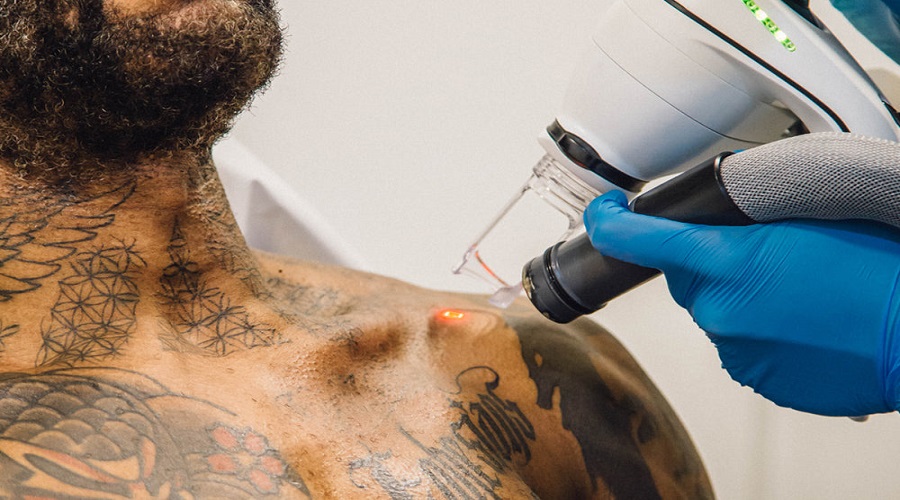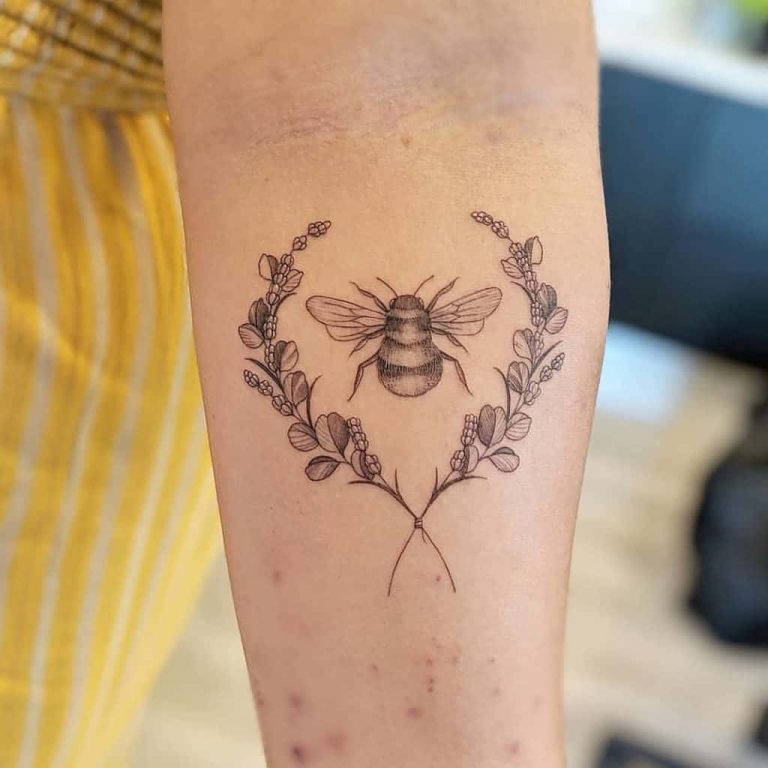There is no one answer to this question since everyone experiences pain differently. Additionally, the level of pain someone feels during tattoo removal can depend on factors such as the size and location of the tattoo, how many sessions are required, and the method used. That said, most people report feeling some discomfort during tattoo removal, but it is generally tolerable.
Some people compare the sensation to that of a rubber band snapping against the skin or a hot grease splatter. If you are concerned about pain, be sure to discuss this with your doctor or tattoo artist prior to beginning treatment.
There is no one definitive answer to this question as everyone experiences pain differently. However, generally speaking, tattoo removal does involve some level of discomfort. There are a few ways to help minimize the pain, such as numbing creams or taking painkillers beforehand.
Additionally, the amount of pain you feel will also depend on where the tattoo is located on your body – for example, tattoos on bones or tendons tend to be more painful than those on fleshier areas. Ultimately, it’s impossible to say exactly how much tattoo removal hurts without knowing more about your individual circumstances.
Laser Tattoo Removal PAIN: How Much Does It Hurt?
How Much Does Tattoo Removal Cost
If you’re considering tattoo removal, you might be wondering how much it will cost. The truth is, there is no one-size-fits-all answer to this question. The cost of tattoo removal will vary depending on a number of factors, including the size and location of the tattoo, the type of laser used for treatment, and the number of sessions required.
With that said, here’s a look at what you can expect to pay for tattoo removal, on average:
The average cost of laser tattoo removal is $200 per session. However, larger tattoos may require 6-10 sessions or more, which can add up quickly.
Additionally, some colors (e.g., green and yellow) are more difficult to remove than others (black), so they may require more sessions as well.
The type of laser used for tattoo removal also plays a role in determining the cost. For example, Q-switched lasers are considered to be the most effective for removing tattoos but they also tend to be the most expensive option, with prices starting at around $250 per session.
On the other hand, newer picosecond lasers are less expensive but may not be as effective at removing certain types of ink.
Finally, the location of your tattoo will also impact the price of removal. Tattoos on areas like the arms or legs typically require fewer sessions than those on sensitive areas like the face or hands because there is less risk of scarring.
Does Tattoo Removal Work
Are you thinking about removing a tattoo? You’re not alone. In fact, according to a recent poll, 1 in 8 Americans regret getting a tattoo.
If you’re among the regretful, there’s good news: tattoo removal is more effective than ever before.
If you’re considering tattoo removal, it’s important to understand how the process works. Here’s what you need to know:
How does tattoo removal work?
The vast majority of tattoos are removed using lasers. The laser breaks up the ink into tiny particles that are then absorbed by the body.
The number of treatments required depends on the size and color of the tattoo. Most people need between 5 and 10 treatments to remove their tattoo completely.
Is tattoo removal painful?
Tattoo removal can be uncomfortable, but it typically isn’t too painful. Your doctor will apply a numbing cream to your skin before starting treatment. Most people say that being hit with the laser feels like being snapped with a rubber band.
Some people also experience swelling and bruising after treatment, which usually goes away within a few days.
How Many Sessions to Remove Tattoo
When it comes to tattoo removal, there is no one-size-fits-all answer. The number of sessions required to remove a tattoo will vary depending on a number of factors, including the size and location of the tattoo, the type of ink used, and your skin’s individual response to treatment.
That being said, most tattoos will require at least 6-8 sessions for complete removal.
Smaller tattoos may only require 4-6 sessions, while larger ones could need 10 or more. If you’re working with a reputable tattoo removal specialist, they should be able to give you a more accurate estimate after assessing your individual case.
Keep in mind that even though tattoo removal can be frustratingly slow at times, it is possible to get rid of unwanted ink for good!
So if you’re patient and committed to the process, you’ll eventually see the results you’re hoping for.
Tattoo Removal near Me
If you’re looking for tattoo removal near you, there are a few things to keep in mind. First, it’s important to find a reputable shop with experience in removing tattoos. Second, be sure to ask about the removal process and what to expect during and after the procedure.
Finally, be sure to get a price quote upfront so you know how much the entire process will cost.
When it comes to tattoo removal, there are two main methods: laser removal and dermabrasion. Laser removal is typically more expensive than dermabrasion, but it is also less painful and has shorter recovery time.
Dermabrasion involves using a rotating brush or other tool to sand down the top layer of skin, which removes the tattoo pigment along with it. This method is more painful than laser removal and takes longer to recover from, but it may be necessary if your tattoo is particularly large or deep-rooted.
Whichever method you choose, be sure to follow your artist’s aftercare instructions carefully to ensure proper healing and avoid infection.
And if you have any concerns or questions during the process, don’t hesitate to reach out to your artist or shop for guidance.

Credit: www.coloradoskinandvein.com
Does Tattoo Removal Remove 100 %?
No, tattoo removal does not remove 100% of the ink. However, it can remove a significant amount of ink depending on the type of laser used, the number of treatments required, and a variety of other factors. Some people may only require one treatment to see a significant reduction in their tattoo, while others may need multiple treatments.
Can Tattoos Be Removed Completely?
Yes, tattoos can be removed completely. There are several methods of tattoo removal, including laser surgery, dermabrasion, and excision. Laser surgery is the most common method of tattoo removal.
It uses a high-intensity light beam to break up the ink pigment in the tattoo. The light beam is absorbed by the ink pigment and breaks it into smaller fragments. These fragments are then eliminated by the body’s immune system.
Dermabrasion is another method of tattoo removal. It uses a rotating wire brush to remove the top layer of skin that contains the tattoo pigments.
Does Tattoo Removal Hurt More Each Time?
There is no definitive answer to this question as it depends on individual pain tolerance levels. Some people report that tattoo removal hurts more each time, while others find that the pain decreases with subsequent treatments. The best way to determine how much pain you will experience is to speak with your tattoo removal specialist ahead of time.
They will be able to give you a better idea of what to expect and help you plan for the discomfort accordingly.
Can a Tattoo Be Removed in One Session?
Yes, a tattoo can be removed in one session. However, it is important to note that not all tattoos can be removed in one session. The number of sessions required for tattoo removal depends on several factors, including the size and location of the tattoo, the type of ink used, and your skin’s response to the treatment.
Conclusion
How Much Does Tattoo Removal Hurt?
Tattoo removal can be a painful experience, depending on the size and location of the tattoo. The larger the tattoo, the more pain you can expect to feel.
The most painful areas for tattoo removal are typically those with thinner skin, such as the wrist or ankle. Additionally, tattoos located closer to bone or sensitive areas like the armpit can also be quite painful.




